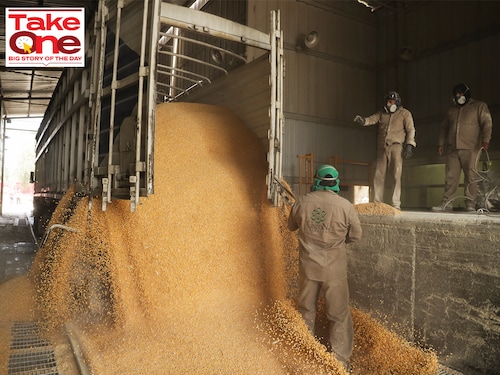India-US trade deal: Farm imports blocked
Opening Indian markets to agricultural imports from America proved to be a key stumbling block in trade negotiations


India’s resistance to opening up its markets to imports of corn, soya beans, dairy and almonds reportedly proved to be a key sticking point in trade negotiations with the US.
Indian negotiators had clearly drawn red lines over what are believed to be US demands for allowing unfettered access to Indian markets. Farmer unions had also repeatedly warned the government over any deal with the US that would allow imports.
“Agricultural products in the US benefit from a lot of subsidies and allowing them would put Indian producers at a disadvantage," says Jayant Dasgupta, former Indian permanent representative to the World Trade Organisation.
In addition, Indian negotiators pointed out that soya bean and corn could come from batches that had genetically modified crops, something Indian consumers are uncomfortable with. Imports of dairy products are also an issue as cattle feed contains a lot of animal proteins that Indian consumers may be unwilling to consume.
In the end it"s unclear why talks went down to the wire and whether the stumbling blocks can now be bridged. One reason for this is that the deal between Indian negotiators and the US trade representative was agreed about a week ago but was only rejected by US President Donald Trump on July 30.
So far, it"s unclear what the US government will settle for and whether there will be any give and take. Commentators point to the fact that by bringing in Russian oil and Russian weapons into the negotiation, the prospect of a deal is farther away.
It is clear that the Indian government is not willing to take on a sector that contributes 18.4 percent of GDP but employs two-thirds of India’s working age population. This despite the fact that sectors as varied as textiles, gems and jewellery, auto components and petroleum would be subjected to a 25 percent tariff in the US.
Certain sectors like laptops and smartphones that have been assembled in India are exempted till August 14. The US government is yet to decide if those exemptions will continue beyond that date.
It’s important to note that while Trump is talking tough, negotiations are still in progress, according to economists at Moody’s. “The Indian economy is more domestically oriented than most in the region and relies far less on trade," they wrote. “Therefore, the harm from the US tariffs should be relatively limited."
First Published: Jul 31, 2025, 19:20
Subscribe Now